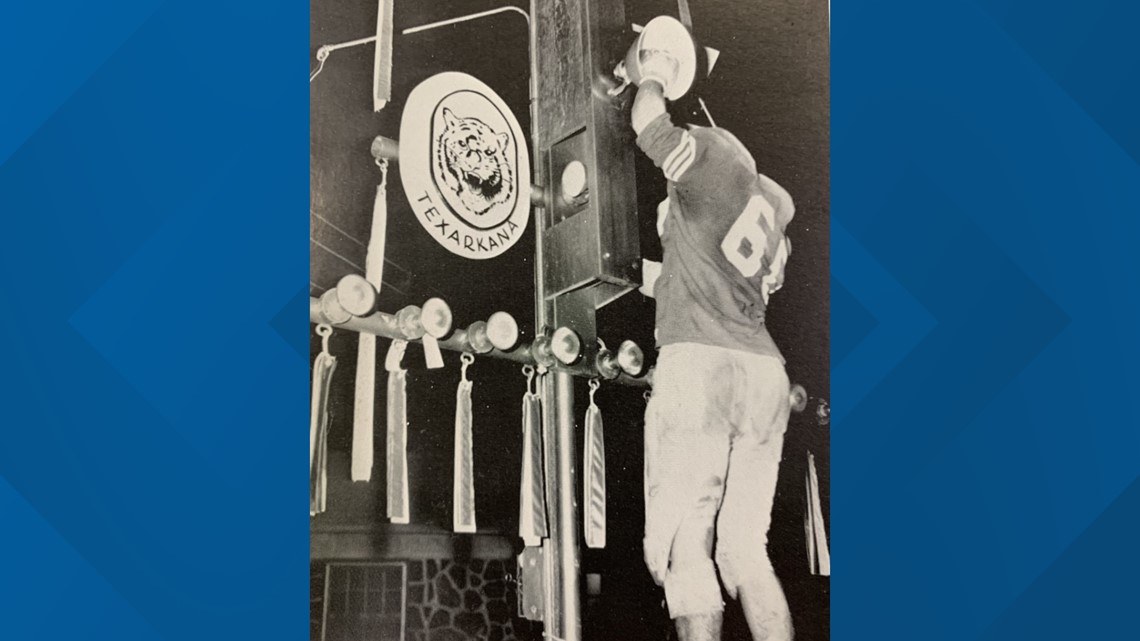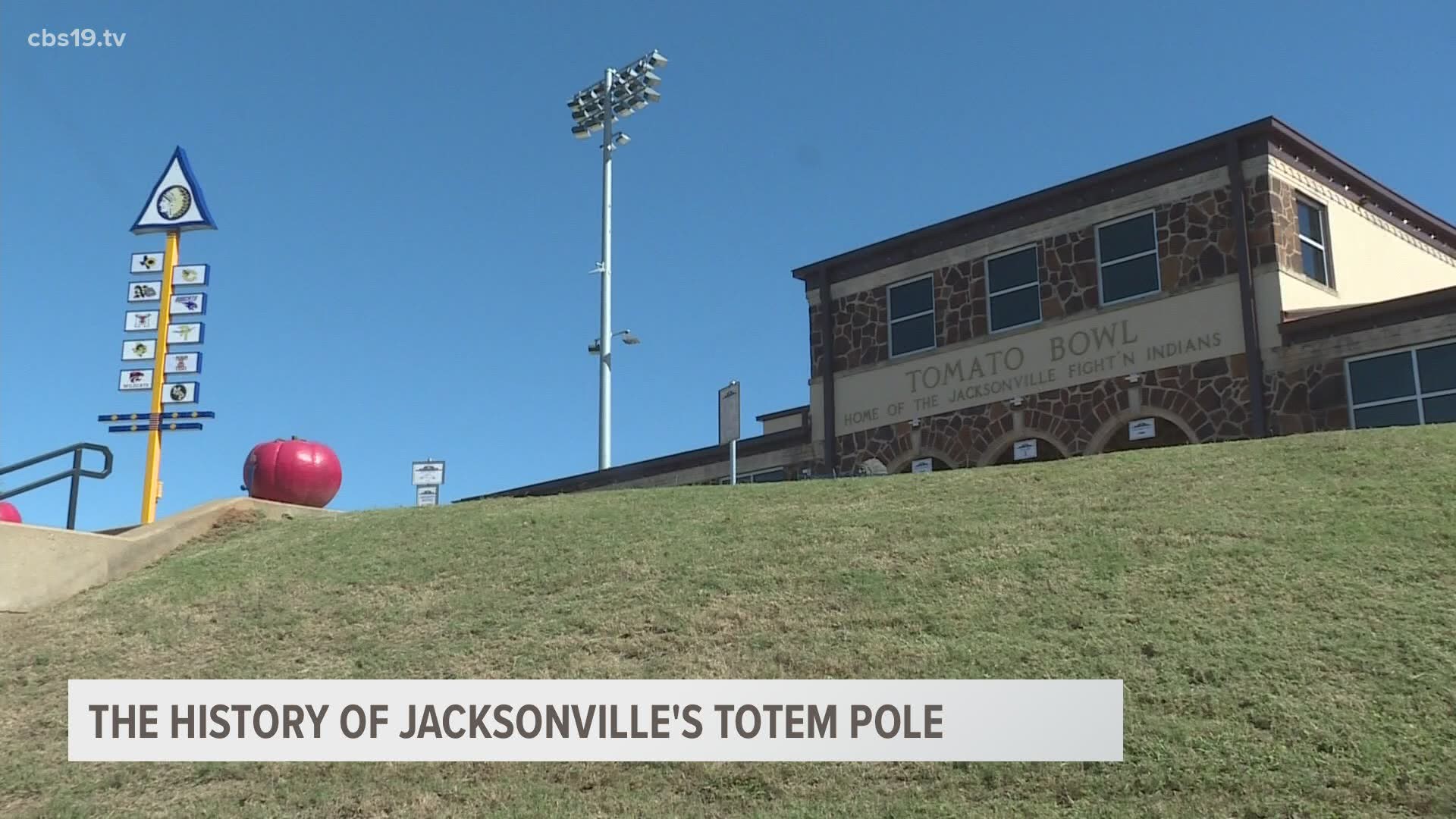JACKSONVILLE, Texas — Before there was the internet, a landmark in Jacksonville was used to alert the community on the high school football team's wins and losses. It's a tradition that's continued for nearly six decades.
The original Totem Pole was erected in 1961. It was designed by Frank and Patti Brown who were in charge of the Jacksonville Booster Club at the time.
It was made from a welded steel pipe to resemble an American Indian totem pole. There were 10 slots on it for preseason and district games. Athletic director and head football coach Wayne Coleman says the players always gather at it after a victory.
"We'd come out here and we'd climb a ladder, and we literally would take a light bulb and screw it in," he said. "I've never seen anything else like it."


When the bond passed in 2017 to renovate the historic Tomato Bowl, the booster club decided it was time for a new totem as well. Chad Devillier, booster president, says while it was re-designed, it models after the original.
"Now, all the signs are illuminated with LED lights, the lights are switched on and off," Devillier explained.
While the Brown family did not play a role in designing the new one, Devillier says Patti helped with its funding.
"It still rings true from what she [Patti] started 60 years ago," Devillier said. "It's pretty awesome to include her in the bottom of the base where all the donors are recognized."
The new pole was placed in the original pole's spot in 2019, with a few extra lights in case the football team advances to playoffs.
Despite the differences in the two totems, Coleman says what it signifies for the community remains the same, especially now during a year full of changes.
"It's been so hard on the kids with all the restrictions," he said. "The seating capacity limitations, you know, have diminished the crowds a little bit. The spirit of the fans that are there, is still great. So, it's very important to try to keep as much of our normalcy around as we can and the Totem Pole helps do that."
The original pole was too weathered to be salvaged, but pictures of it are showcased at the Tomato Bowl Hall of Fame entry with other historical documents.

